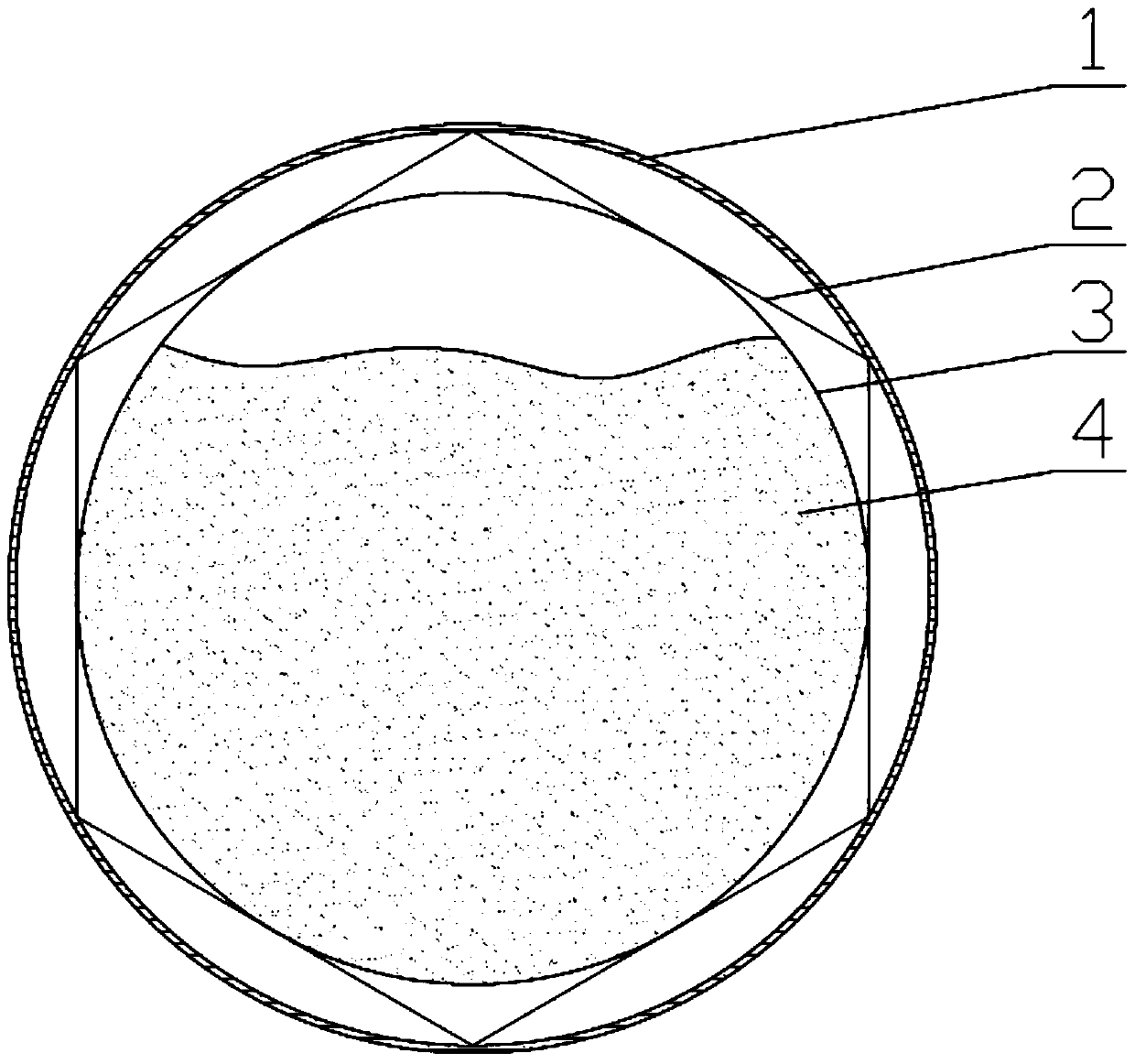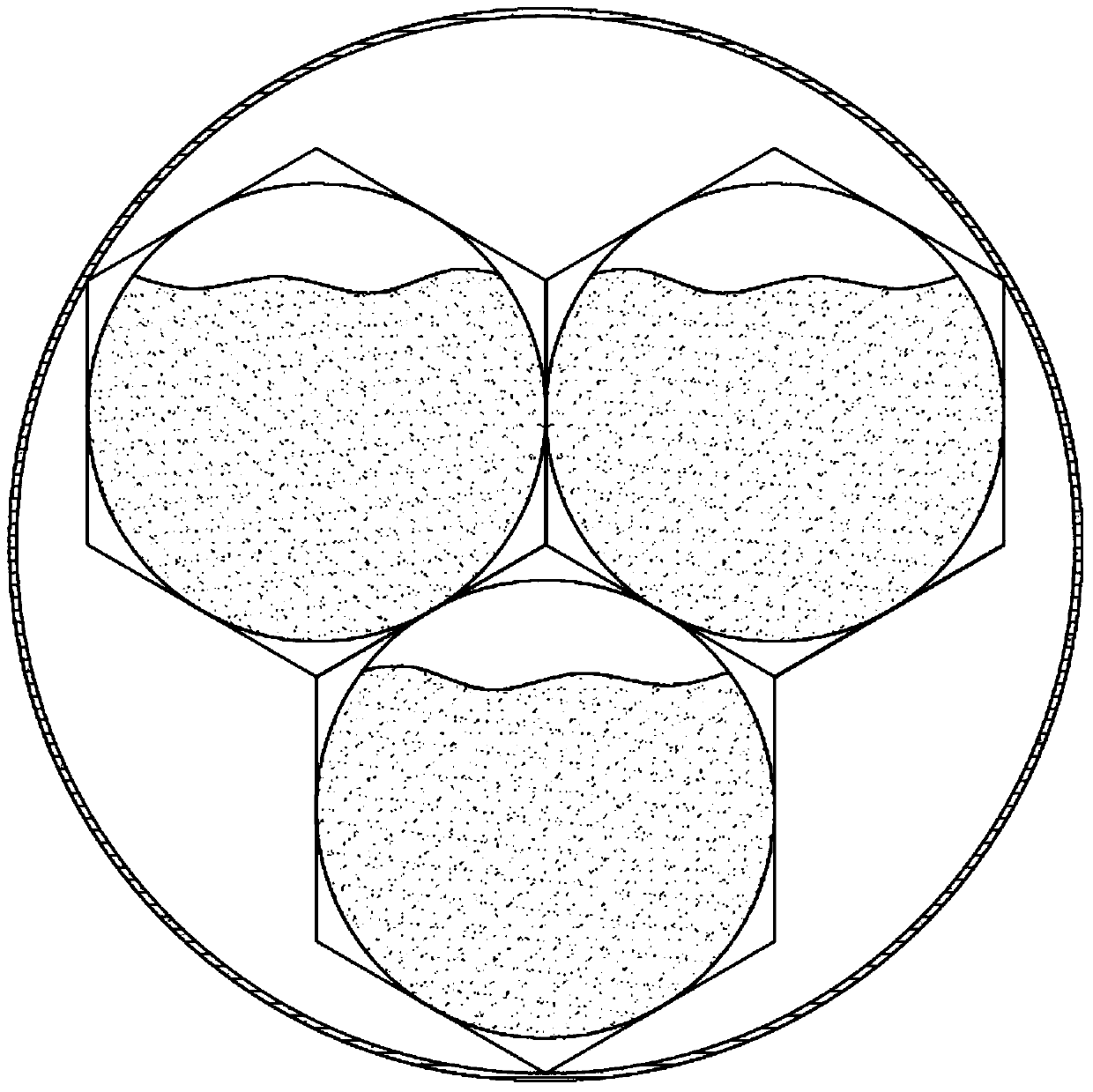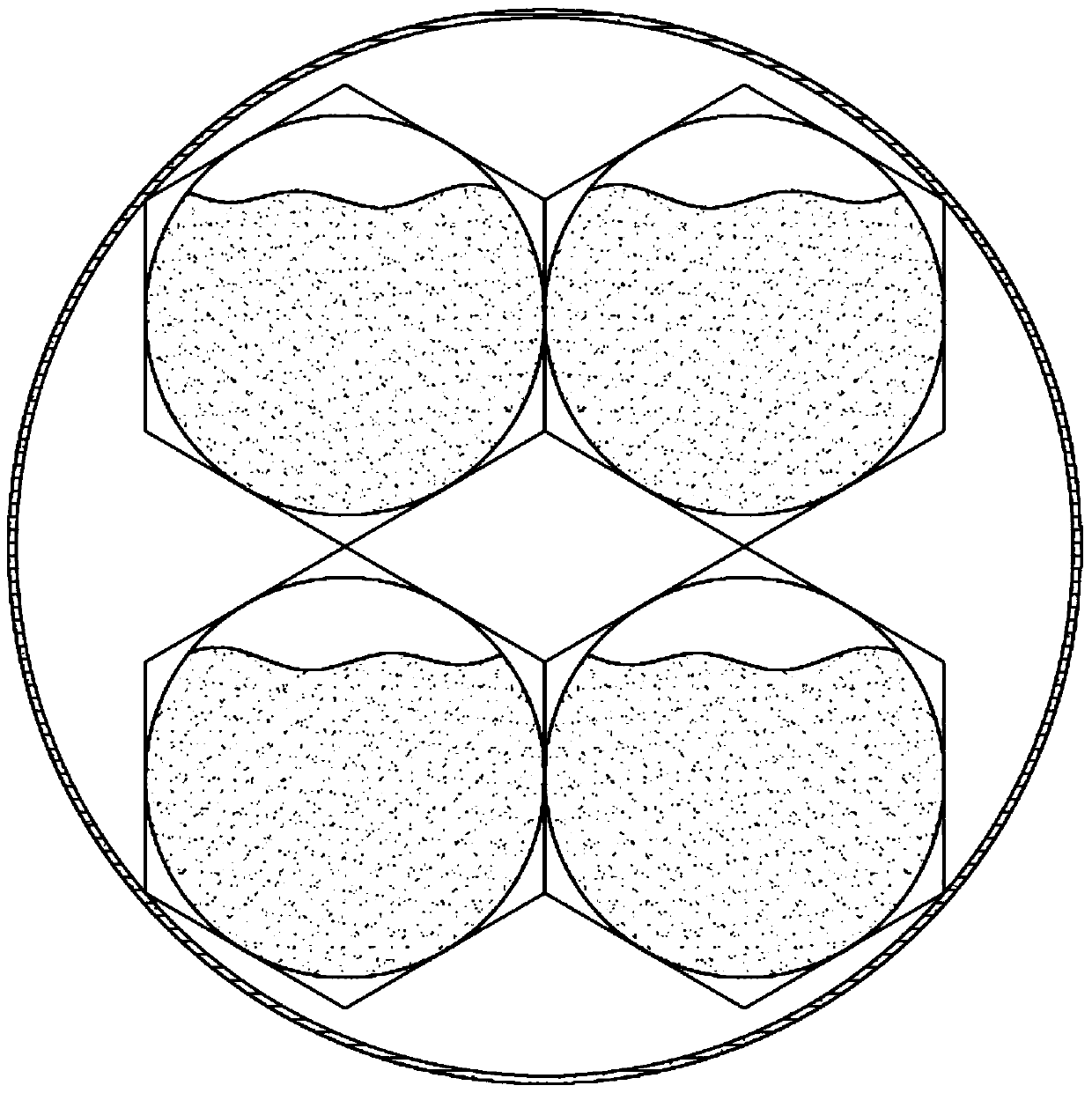A kind of 3D printing peripheral nerve catheter and preparation method thereof
A peripheral nerve and 3D printing technology, applied in the field of medical devices, can solve the problems of slow nerve regeneration process, lower nerve regeneration efficiency, and confusion, and achieve increased stability, good spatial stability and pressure resistance, and improved production efficiency. Effect
- Summary
- Abstract
- Description
- Claims
- Application Information
AI Technical Summary
Problems solved by technology
Method used
Image
Examples
Embodiment 1
[0037] Through the preparation method of the present invention, a 3D printed peripheral nerve catheter is prepared, and the proportions of PGA and PLA in the mixed material constituting the casing 1 and the hexagonal prism tube 2 are respectively 5:5 and 8:2, and the hexagonal prism tube 2 is set to four , nine nerve growth factor carrier balls 3 (as attached Figure 7), and the arrangement of the nerve growth factor carrier balls 3 is gradually reduced from one end of the hexagonal prism tube 2 to the other end; at the same time, when printing nine nerve growth factor carrier balls 3, the content of PGA in the mixed material used is from the nerve growth The ratio of the factor carrier ball 3 from the high-density end to the low-density end gradually becomes smaller, and finally becomes the same as the ratio of PGA and PLA in the hexagonal prism tube 2, that is, 8:2. In this embodiment, the degradation order of each part of the entire catheter is: NGF carrier balls in the tig...
Embodiment 2
[0039] In this embodiment, a patient with a defect of the superficial radial nerve in the left upper arm was first selected for clinical repair of a 3D peripheral nerve catheter. The patient's nerve defect reached 2.5cm. A peripheral nerve catheter is manufactured through the preparation method of the present invention, and the specific parameters of the catheter are as follows: the length is 3.0 cm, the diameter is 0.3 cm, a hexagonal prism tube is built in, and hollow balls injected with mouse nerve growth factor are evenly distributed in the catheter. The case was followed up at 2 weeks, 1 month, 3 months, and 6 months after the nerve catheter was inserted and repaired. It was confirmed by high-frequency ultrasonography that the regenerated axons of the nerve in the catheter had reached the distal end of the nerve at 3 months after operation.
[0040] On the basis of the first case above, 15 cases of superficial radial nerve defect have been repaired successively. All case...
PUM
| Property | Measurement | Unit |
|---|---|---|
| diameter | aaaaa | aaaaa |
| length | aaaaa | aaaaa |
| diameter | aaaaa | aaaaa |
Abstract
Description
Claims
Application Information
 Login to View More
Login to View More - R&D Engineer
- R&D Manager
- IP Professional
- Industry Leading Data Capabilities
- Powerful AI technology
- Patent DNA Extraction
Browse by: Latest US Patents, China's latest patents, Technical Efficacy Thesaurus, Application Domain, Technology Topic, Popular Technical Reports.
© 2024 PatSnap. All rights reserved.Legal|Privacy policy|Modern Slavery Act Transparency Statement|Sitemap|About US| Contact US: help@patsnap.com










